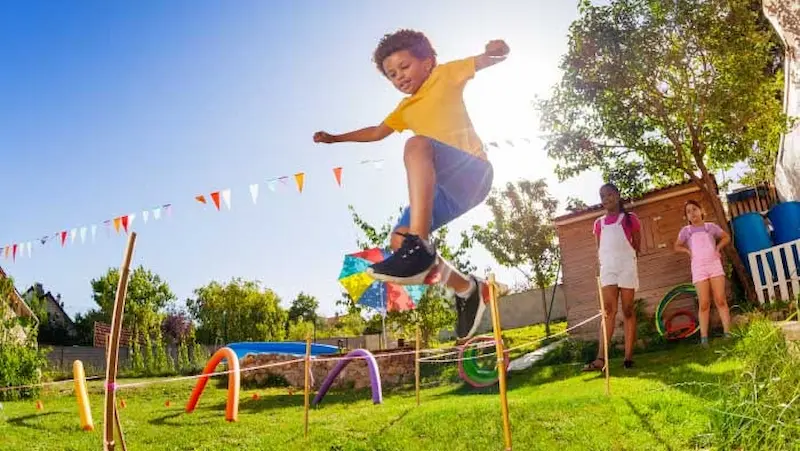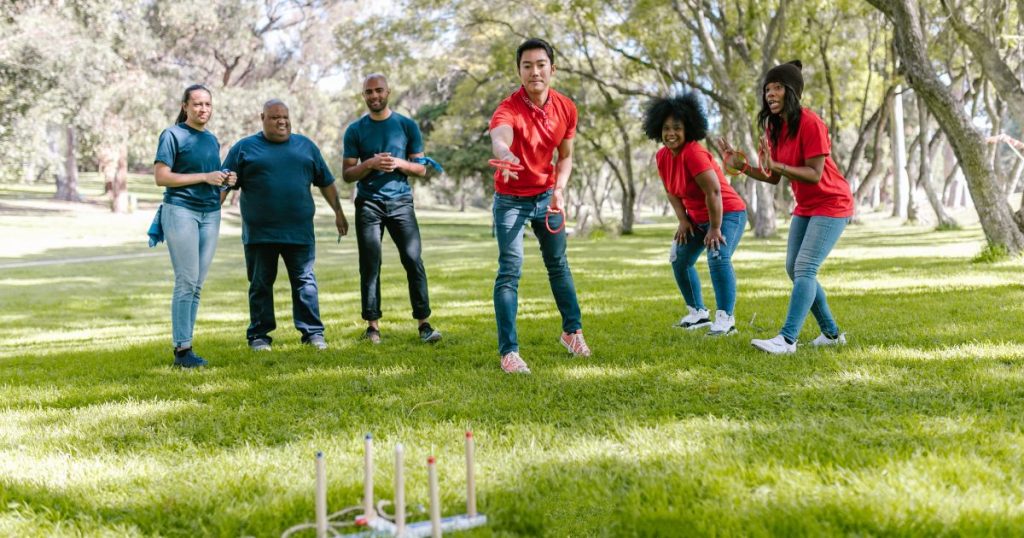Outdoor Games for Children

Outdoor games are an essential part of childhood development, offering children the chance to engage in physical activity while fostering creativity, social interaction, and cognitive skills.
With the rise of digital devices and indoor entertainment, it has become even more critical to encourage children to spend time outdoors and engage in games that stimulate their physical and mental growth.
Whether it’s a game of tag, a scavenger hunt, or a team-based sport, outdoor games provide countless benefits for children, from boosting their health to helping them develop essential life skills such as teamwork, problem-solving, and resilience.
This article will explore various outdoor games for children, grouped into categories based on the type of activity, such as physical games, cooperative games, and imaginative play.
Additionally, we will discuss the importance of outdoor play and the ways in which parents, caregivers, and communities can foster environments that encourage outdoor activity.
1. Traditional Physical Games
Physical outdoor games are essential for children’s development, as they improve motor skills, coordination, balance, and endurance.
These games are often simple and require little equipment, making them ideal for playgrounds, parks, or even backyards. Here are a few of the most popular traditional outdoor games for children:
a. Tag
Tag is one of the most beloved outdoor games for children, requiring nothing more than an open space and enthusiastic participants.
In this game, one child is “it,” and the other children must run away from them. The goal is to avoid being tagged by “it” while trying to tag others.
There are many variations of the game, such as “freeze tag,” where players must freeze when tagged until a teammate unfreezes them.
Tag promotes cardiovascular health and helps children develop agility and reaction time. It’s also a great game for large groups, making it perfect for playdates or school recess.
For more ways to play tag, visit websites like Kidspot for different variations of the game.
b. Hide and Seek
Another classic game is Hide and Seek, where one child counts while the others hide. The goal is for the seekers to find all the hidden players.
The game helps children develop their problem-solving abilities, critical thinking skills, and social awareness, as they need to strategize their hiding spots and collaborate with other players.
This game can be played in a backyard, park, or forest area, offering kids the opportunity to explore their surroundings while having fun. It’s a fantastic way for children to develop spatial awareness and improve their ability to focus.
Check out variations and tips for hide-and-seek games at Playworks.
c. Simon Says
Simon Says is a fun game that combines listening skills and physical activity. In this game, one child (or an adult) is Simon and gives commands, such as “Simon says jump” or “Simon says run in place.”
Children must only follow the command if it starts with “Simon says.” If Simon gives a command without saying “Simon says,” children must not act on it. If they do, they’re out. This game encourages children to focus and follow directions.
For additional variations of Simon Says, check out suggestions on websites like Mom Junction.
2. Cooperative Games
Cooperative outdoor games foster teamwork, communication, and problem-solving skills. These games require children to collaborate and work together toward a common goal, promoting positive interactions and reducing conflict. Here are some great cooperative games for children:
a. Capture the Flag
In Capture the Flag, two teams compete to capture the other team’s flag while protecting their own. This game encourages teamwork, strategic thinking, and physical activity. Teams work together to create defenses, plan their moves, and support each other in capturing the flag.
Capture the Flag is a fantastic game for children because it challenges both their physical endurance and their ability to work as a team. You can play this game in large open spaces, such as parks or schoolyards.
Find instructions and variations of the game at PBS Kids.
b. Group Jump Rope
Group jump rope is a fun, cooperative game that involves multiple children jumping rope together at the same time. One child or a group swings the rope while others jump over it.
The goal is to get as many children as possible jumping without tripping on the rope. This game promotes coordination, timing, and teamwork.
Group jump rope is a perfect game for groups of children in a park or playground setting. You can increase the challenge by setting goals for how many consecutive jumps the group can make.
c. Parachute Games
Parachute games are popular in schools and camps and provide great opportunities for cooperative play. In this game, children hold onto a large parachute and work together to make the parachute rise and fall, creating different effects like waves or making it fly high in the air.
Children can also play games where they try to keep a ball on the parachute or run underneath it before it falls.
Parachute games are fun and promote teamwork, communication, and coordination. They are suitable for a wide range of ages, making them ideal for both younger and older children.
You can learn more about parachute games at PE Central.
3. Imaginative and Creative Outdoor Play
Imaginative outdoor play allows children to engage in role-playing, creativity, and storytelling, which are essential components of cognitive development.
These types of games provide children with the freedom to explore new worlds and scenarios while honing their communication and problem-solving skills. Some examples include:
a. Treasure Hunt
A treasure hunt is an excellent game for children who love exploration and adventure. In this game, children follow clues or a map to find hidden treasures scattered around the area. The hunt can involve riddles, puzzles, or even tasks that need to be completed to uncover the next clue.
This game promotes critical thinking, teamwork, and physical activity. Treasure hunts can be tailored to any age group by adjusting the complexity of the clues.
For treasure hunt ideas and printable maps, check out Education.com.
b. Outdoor Obstacle Course
An outdoor obstacle course is a creative way for children to test their physical abilities and engage in imaginative play.
You can set up obstacles using items found around the house or in the yard, such as cones, ropes, tires, and furniture. Children can pretend to be explorers, adventurers, or superheroes as they race through the course.
Obstacle courses promote physical fitness, coordination, and creative thinking. They can be made more exciting by adding themes or challenges that require problem-solving.
Find tips on building outdoor obstacle courses at Active Kids.
c. Nature Play
Nature play is all about letting children explore the outdoors and use natural resources to create their own games. Whether it’s building a fort from sticks, making mud pies, or collecting rocks, nature play encourages children to engage their senses, practice creativity, and learn about their environment.
Nature play has been shown to boost cognitive development and emotional well-being. It also fosters a sense of curiosity and environmental stewardship.
You can learn more about the benefits of nature play at The Nature Conservancy.
4. Sports and Physical Games
For children who enjoy competitive sports and activities, engaging in structured outdoor sports helps them develop important life skills such as discipline, leadership, and perseverance. Sports provide children with a great way to stay active while having fun. Here are some excellent options:
a. Soccer
Soccer is one of the most popular team sports worldwide, and children love playing it for its simplicity and excitement.
A game of soccer can be played in a park or open field with minimal equipment. Children can develop their coordination, balance, and team-working abilities through soccer.
Check out Soccer for Kids for tips on getting children started with soccer.
b. T-ball or Baseball
T-ball is an excellent introduction to baseball for young children. In T-ball, children hit a stationary ball off a tee instead of having to swing at a pitched ball.
It helps develop hand-eye coordination, strength, and teamwork. As children grow older, they can transition into playing regular baseball or softball.
For more information about T-ball leagues, check out resources like Little League.
c. Kickball
Kickball is a classic outdoor game that is easy to play and understand. Similar to baseball, children kick a rubber ball and run around bases, trying to score points. This game promotes physical activity and social interaction and can be played by kids of various skill levels.
You can learn more about kickball and its rules at Kickball.com.
5. Safety and Supervision
While outdoor games are a wonderful way for children to stay active, it’s important to keep safety in mind. Ensure that children play in safe, enclosed areas away from traffic or hazardous environments. Depending on the activity, children may need appropriate protective gear, such as helmets for biking or soccer.
Adults should supervise children during play to prevent accidents and ensure that games are played fairly and respectfully. It’s also important to encourage children to stay hydrated and take breaks, especially in hot weather.
Conclusion
Outdoor games are essential for children’s physical, mental, and emotional development. From traditional physical games like tag and hide-and-seek to cooperative games like capture the flag and parachute games, the outdoor options available for children are limitless.
Additionally, imaginative play such as treasure hunts and obstacle courses allows children to exercise their creativity and problem-solving skills.
By encouraging children to spend time outdoors and engage in these games, parents, caregivers, and communities can help children build the skills they need to thrive both physically and socially.
These activities also promote healthy habits, boost self-confidence, and provide opportunities for social interaction. The key is to create an environment where outdoor play is accessible, fun, and safe.
To learn more about outdoor games and activities for children, visit websites like PBS Kids, Active Kids, and Education.com for more ideas and resources.






